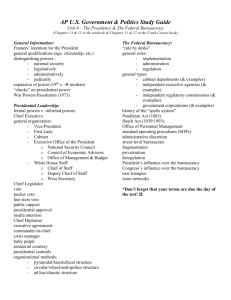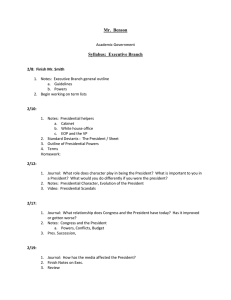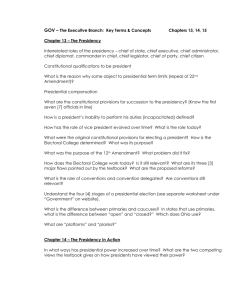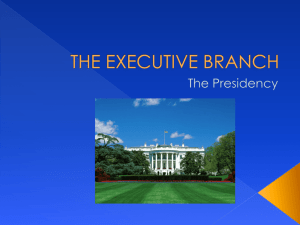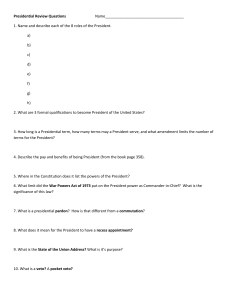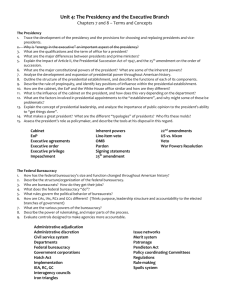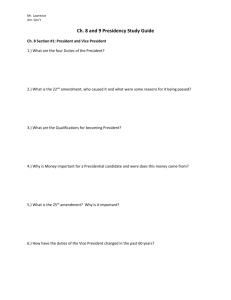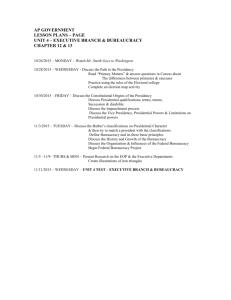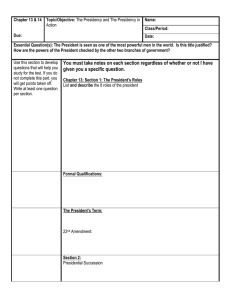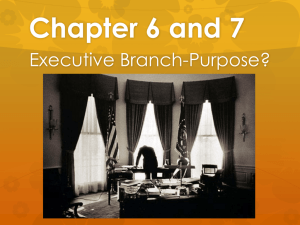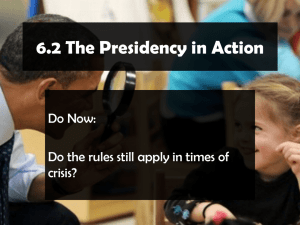Law and Gov The Executive Branch Study Guide Instructional
advertisement
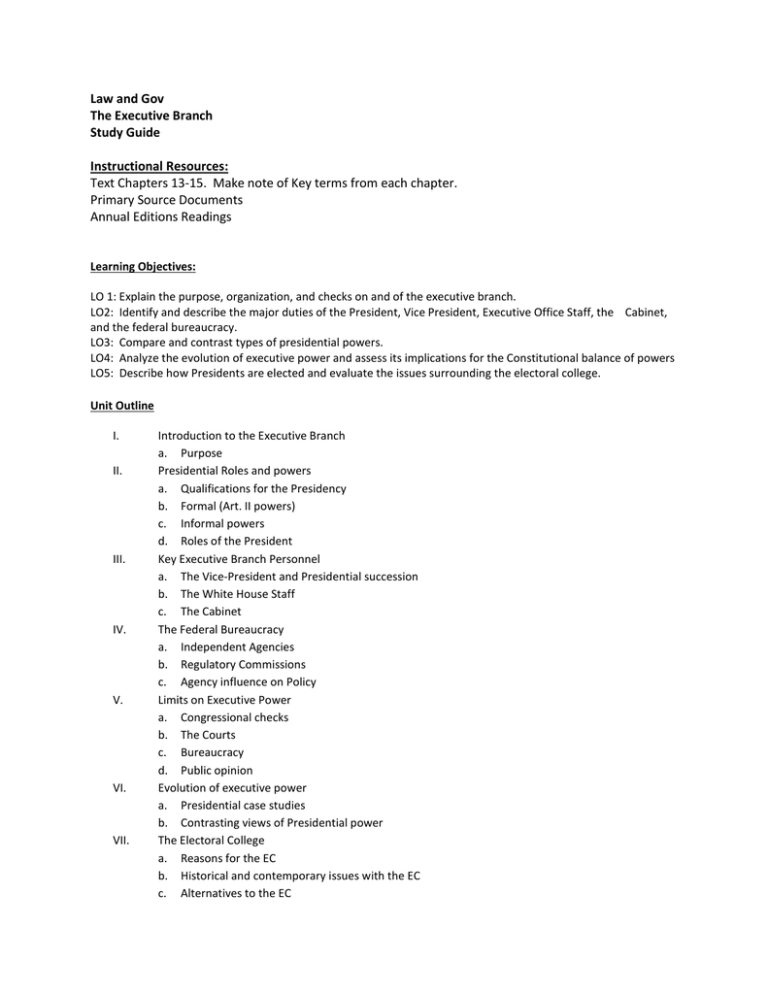
Law and Gov The Executive Branch Study Guide Instructional Resources: Text Chapters 13-15. Make note of Key terms from each chapter. Primary Source Documents Annual Editions Readings Learning Objectives: LO 1: Explain the purpose, organization, and checks on and of the executive branch. LO2: Identify and describe the major duties of the President, Vice President, Executive Office Staff, the Cabinet, and the federal bureaucracy. LO3: Compare and contrast types of presidential powers. LO4: Analyze the evolution of executive power and assess its implications for the Constitutional balance of powers LO5: Describe how Presidents are elected and evaluate the issues surrounding the electoral college. Unit Outline I. II. III. IV. V. VI. VII. Introduction to the Executive Branch a. Purpose Presidential Roles and powers a. Qualifications for the Presidency b. Formal (Art. II powers) c. Informal powers d. Roles of the President Key Executive Branch Personnel a. The Vice-President and Presidential succession b. The White House Staff c. The Cabinet The Federal Bureaucracy a. Independent Agencies b. Regulatory Commissions c. Agency influence on Policy Limits on Executive Power a. Congressional checks b. The Courts c. Bureaucracy d. Public opinion Evolution of executive power a. Presidential case studies b. Contrasting views of Presidential power The Electoral College a. Reasons for the EC b. Historical and contemporary issues with the EC c. Alternatives to the EC

